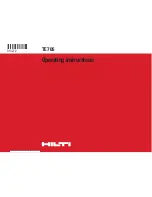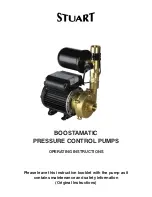
5
the saw from the work or pull the saw
backward while the blade is in motion or
kickback may occur.
Investigate and take
corrective action to eliminate the cause of
blade binding.
c.
When restarting a saw in the workpiece,
center the saw blade in the kerf so that the
saw teeth are not engaged into the
material.
If a saw blade binds, it may walk up
or kickback from the workpiece as the saw is
restarted.
d.
Support large panels to minimize the risk of
blade pinching and kickback.
Large panels
tend to sag under their own weight.
Supports must be placed under the panel on
both sides, near the line of cut and near the
edge of the panel.
e.
Do not use dull or damaged blades.
Unsharpened or improperly set blades
produce narrow kerf causing excessive
friction, blade binding and kickback.
f.
Blade depth and bevel adjusting locking
levers must be tight and secure before
making cut.
If blade adjustment shifts while
cutting, it may cause binding and kickback.
g.
Use extra caution when sawing into
existing walls or other blind areas.
The
protruding blade may cut objects that can
cause kickback.
Lower Guard Function
a.
Check the lower guard for proper closing
before each use. Do not operate the saw if
the lower guard does not move freely and
close instantly. Never clamp or tie the
lower guard into the open position.
If the
saw is accidentally dropped, the lower guard
may be bent. Raise the lower guard with the
retracting handle and make sure it moves
freely and does not touch the blade or any
other part, in all angles and depths of cut.
b.
Check the operation of the lower guard
spring. If the guard and the spring are not
operating properly, they must be serviced
before use.
Lower guard may operate
sluggishly due to damaged parts, gummy
deposits, or a build-up of debris.
c.
The lower guard may be retracted manually
only for special cuts such as “plunge cuts”
and “compound cuts”. Raise the lower
guard by the retracting handle and as soon
as the blade enters the material, the lower
guard must be released.
For all other
sawing, the lower guard should operate
automatically.
d.
Always observe that the lower guard is
covering the blade before placing the saw
down on bench or floor.
An unprotected,
coasting blade will cause the saw to walk
backwards, cutting whatever is in its path.
Be aware of the time it takes for the blade to
stop after the switch is released.
a.
Inspect the condition and quality of the
wood and remove all nails from lumber
before cutting.
Wet lumber, green lumber or
pressure treated lumber require special
attention during cutting operation to prevent
kickback.
b.
Hold the saw firmly to prevent loss of
control.
Figures in this manual illustrate
typical hand support of the saw.
c.
Depending upon use, the switch may not
last the life of the saw. If the switch should
fail in the “OFF” position, the saw may not
start. If it should fail while the saw is
running, the saw may not shut off.
If either
occurs, remove the battery pack from the
saw immediately and do not use until
repaired.
d.
This circular saw should not be mounted to
a table and converted to a table saw.
Circular saws are not designed or intended
to be used as table saws.
e.
The blade washers and the bolt on your saw
have been designed to work as a clutch to
reduce the intensity of a kickback.
Safety Instructions for Circular Saws
Additional Safety Instructions for Circular Saws
1600A01UV3.qxp_GKS18-25 4/27/20 8:12 AM Page 5






































